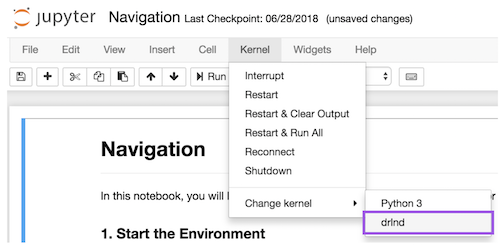This project uses deep reinforcement learning to teach an agent to navigate on a virtual world filled with good (yellow) and rotten (blue) bananas.
This repo is a fork of the Udacity's deep reinforcement learning p1_navigation repo.
To train a new model, use the Navigation.ipynb notebook. There is another notebook file named Report.ipybn where a comparison between trained models is done.
The environment consists of a large, square world filled with bananas. The agent should learn how to collect the yellow bananas (reward of +1) while avoiding the blue bananas (reward of -1).
The agent's state has 37 dimentions and it is composed of its speed along with ray-based perception of objects around the agent's forward direction.
At any given state, the agent has the four discrete actions to take. It can move forward, backward, left or right.
0- move forward.1- move backward.2- turn left.3- turn right.
The agent receives a reward of +1 for every yellow banana collected and -1 if a blue banana is collected.
The environment is considered solved when the agent can get an average score of +13 over 100 consecutive episodes.
To set up your python environment to run the code in this repository, follow the instructions below.
-
Create (and activate) a new environment with Python 3.6.
- Linux or Mac:
conda create --name drlnd python=3.6 source activate drlnd- Windows:
conda create --name drlnd python=3.6 activate drlnd
-
Install Python dependencies.
pip install -r requirements.txt- This project uses Unity to emulate the environment in which the agent takes actions. To run it, you will need to download the environment that matches the operating system you are using.
- Linux: click here
- Linuz (no visualization): click here
- Mac OSX: click here
- Windows (32-bit): click here
- Windows (64-bit): click here
After downloading the environment, extract the zip file anywhere and update the Navigation.ipynb file with the path to the environment folder.
- Create an IPython kernel for the
drlndenvironment.
python -m ipykernel install --user --name drlnd --display-name "drlnd"- Before running code in a notebook, change the kernel to match the
drlndenvironment by using the drop-downKernelmenu.
There are three Neural Networks available in the models folder. The input layer of all of the models has the same size of the state space and the ouput layer has the size of the actions space. All of them have 2 hidden layers with sizes described by model_name below:
- dqn_32: 64x32
- dqn_64: 64x64
- dqn_128: 128x64
In the checkpoints folder, you can find a trained checkpoint for all models. For each model there are three files saved:
- checkpoint_{model_name}_goal.pth: a pytorch checkpoint that can be loaded into the corresponding model. This checkpoint is saved the first time the model reaches the goal.
- checkpoint_{model_name}.pth: same as the above but saved at the end of the training. The models available were trained for 2000 episodes.
- score_{model_name}.pkl: a pickled array containing the scores reached by the model while training per episode.
To watch a trained model executing actions on the environment use the watch.py script. Use -h or --help to see how to use the tool.
usage: watch.py [-h] [-g] {dqn_32,dqn_64}
Watch a trained model running on the environment.
positional arguments: {dqn_32,dqn_64} Which model to use to choose the actions of the agent
optional arguments: -h, --help show this help message and exit -g, --goal Use the trained model at the moment that it reached the goal instead of after all the episodes

